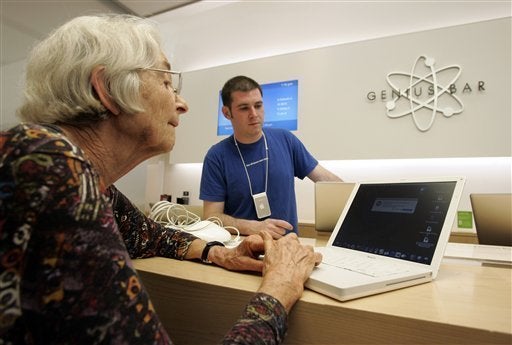
Innovation is more highly prized than ever, but innovation that makes a significant difference is hard to find. This is particularly true with respect to schools, where few innovations of the last decade have had real, positive, and lasting impact on basic skills performance, high school graduation, or college success.
As the Obama administration embarks on a massive effort to improve America's schools, we hope disruptive innovations outside of the existing education system are carefully considered. At the Apple Store, we found one model for such disruptive innovation that holds real promise for America's schools.
The Store has three carefully designed learning environments for playing, buying, and learning. The spaces for playing and buying are certainly effective, but the spaces for learning -- Studio and Genius Bar -- are what we think merit a closer look.
The Studio is devoted to one-on-one and small group instruction about Apple products and software applications. Seminars and workshops are scheduled regularly, but most learning opportunities are ad hoc and customized for whomever signs up. Of the Studio, the Apple literature says, "There is no better way to learn more, or learn it faster, than with one-to-one personal training sessions." Customers "create a program that is customized to your level of experience" with "personal training sessions designed to move at your pace and provide the support and guidance you need."
The Genius Bar is a space for problem solving and troubleshooting. Here, customers receive personalized technical assistance in addressing just about any problem. The Genius Bar has technicians serving as teachers and tutors, sometimes therapists. Apple has elevated the technician to "genius" level, empowered to repair and to teach.
The play area up front shares a lot in common with a typical kindergarten classroom, the Studio with a graduate seminar, and the Genius Bar with a lab. The environment provides customers with multiple options and pathways for engaging their hands, minds, and, yes, hearts -- typically through one-on-one learning experiences.
What are the essential features of the Apple Store's learning culture?
- The learning experience is highly personalized and focused on the interests and needs of the individual customer.
A disruptive innovation? We think so. The Apple Store has created a new type of learning environment that allows individuals to learn anything, at any time, at any level, from experts, expert practitioners, and peers.
One question the Apple Store designers certainly addressed was: How might we design a store and an experience that gets people to come back again and again? And buy again and again?
In that spirit, we ask: How might schools design learning opportunities and learning environments so that all students choose to engage in deep and sustained learning? And choose to do that kind of learning again and again for the rest of their lives?
Of course, technology is a critical enabler. Networks, social networking, and "wiki" capacities can be employed to support learning. The thousands of how-to sites on the Internet allow anyone to learn and practice how to do just about anything. What all of these resources require is a framework, a system for helping each learner make sense of all of these resources and integrate them into a personalized learning plan. That is a task for schools.
The sci-fi novelist William Gibson wrote that the future is already here; its just not evenly distributed. If Gibson is right, then there's a big chunk of the future of learning in the Apple Store just waiting to be more evenly distributed. And we would do well to spread that future into schools and communities throughout our country.